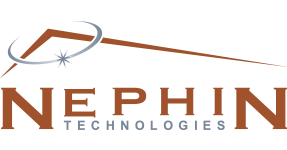Why the Smart Building design process must be made smarter
The building industry is intended to be tightly regulated and process orientated – from building codes to CSI divisions. Codes ensure the safety of a building’s occupants and familiarity in their use, from step height to which side the hot water is located on a faucet. CSI divisions provide structure on how systems are specified and installed, a consistency that makes bidding and vetting more streamlined. The industry is driven by licensed professionals and trades, ensuring the parties responsible for the above are qualified and capable.
Unfortunately, these standards and processes have not kept pace with technology development. Building technology encompasses many disciplines – from traditional Communications Systems (Div. 270000) to BMS Controls (Div. 230000), Electrical Controls (Div. 260000) to Security Systems (Div. 280000), and others. These divisions and the associated documentation, including drawings, are best developed by subject matter experts for that discipline. However, many of technologies utilized in buildings depend on IT systems (servers, storage, networking, security, workstations, cellular, etc.) to operate, which are not effectively addressed in these divisions. Furthermore, these divisions overlook the responsibilities for deploying smart infrastructure. Too many buildings today have networked systems that pose a security threat to the integrity of the building’s operations, and potentially their tenant’s data. Many designs are based on specifications that are outdated and don’t comply with current IT standards. And very often the individual system designs are done by independent engineers within a firm, installed by various sub-contractors, with no coordination of the technology or synergy between them. Although the AHJ requires engineers and contractors to be qualified, file permits, hold licenses, conduct inspections, and use affidavits as part of close out for traditional systems – who is looking out for the building owner’s technology interests? Technology is often dismissed or overlooked because it’s not understood, feared, or perceived as unnecessary and expensive.
While many buildings that use a Building Management/Automation System (BMS/BAS) are ‘smart capable’, many of them would not be ‘smart-certified’ primarily due to security vulnerabilities and poor deployment methodologies. The more advanced and energy saving systems, and those of benefit to tenants, are often never considered, or value engineered out by ownership without benefit of perspective and insight. The current design, bid, and construction processes do not lend themselves to a structured, consultative technology roadmap. Technology infrastructure (communications, physical security, controls, audio-visual, etc.) is more than just symbols on a drawing or a spec – it’s an overarching comprehensive needs analysis, strategy, and design process that covers many design disciplines to ensure all technology components are delivered/installed in a structured, secure manner. We’ve often seen the controls, electrical, mechanical, and security contractors install similar and duplicated systems which is a waste money and energy, and can exponentially increase the risk profile and vulnerabilities of the building. We’ve also seen references to IT systems in specifications that are no longer even supported by the manufacturer, or represent a dated strategy. Often these approaches lead to ongoing operational expenses that can be 10 times what they should be, wasting $100k over 10 years from one recent example – duplicated devices lead to duplicated service contracts, increasing cost for maintenance agreements, and separate agreements with carriers for remote monitoring and circuits.
To make the smart building process smarter, owners, design teams, and general contractors employ the use of qualified Technology Consultants who specialize in working with owners and building construction teams to provide the necessary structure, engineering capabilities, best practice knowledge, and technical project management to realize a successful project and building operation. As tenants become savvier and more demanding from a smart technology perspective, the design process must keep pace. To be successful, these systems must operate in an integrated fashion, which requires the technology design to be comprehensive and holistic. A unified network design that supports all the technology disciplines should be created, the architecture shared across the design and construction teams, with a qualified integrator installing the technology systems and supporting the contractors with their system configuration and commissioning to maintain the security posture. This process also ensures that the necessary as-built documents and reports are provided so the building owner and management know what they have, and can share the info with tenants who need to integrate with base-building systems.
If you have questions on the above, or would like to learn more about smart buildings and their value/benefits, design, or operation, visit https://nephin.co/resources/ to view our series of white papers. Please check back for future posts as we explore some of these considerations further.
